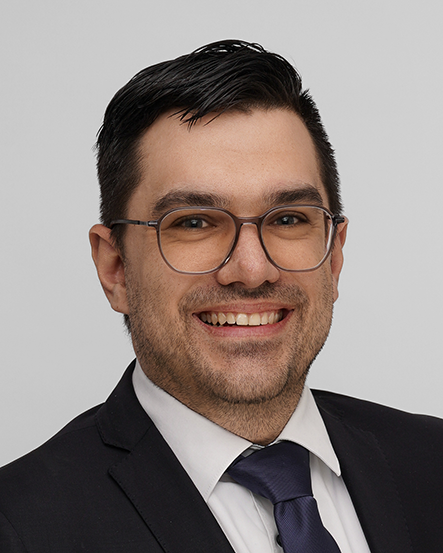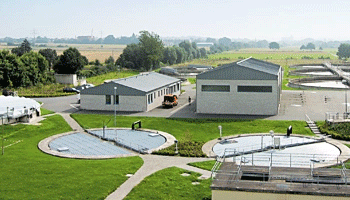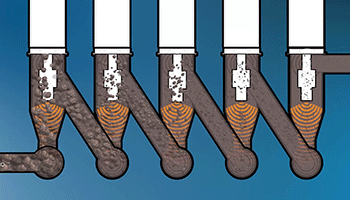SONOTRONIC GmbH
Becker-Goering-Str. 17-25
76307 Karlsbad, Germany
E-Mail: sales@sonotronic.de
Mon to Thu 8 am – 5 pm
Friday 8 am – 3 pm
Phone:
High-performance ultrasonic system BIOSONATOR
Increasing efficiency in wastewater treatment plants, biogas plants and industry
The use of SONOTRONIC BIOSONATOR high-performance ultrasonic systems increases the efficiency and yield of digested materials in the treatment of biosolids. Due to their modular design, they are available for almost all plant sizes. The economic efficiency of plants for wastewater treatment or for the production of biogas that can be used for energy purposes is significantly improved by the ultrasonic treatment of biosolids without polluting the environment.
The BIOSONATOR is a stand-alone unit for the treatment of sewage sludge or biomass with ultrasonic
In SONOTRONIC's high-performance ultrasonic system, the biomass is sonicated with ultrasonic in the frequency range of 20 kHz and very high acoustic intensity. This leads to the most powerful effects, such as cell disintegration, disinfection, decomposition of polymers and release of enzymes. The reaction chamber is optimized to achieve a homogeneous cavitation field in the entire space flowed through.
The biggest advantage compared to other processes: In all plant technologies available on the market for disintegration with ultrasonic, only the BIOSONATOR high-performance ultrasonic system is capable of generating hard cavitation! This means that the biomass is directly sonicated. Competing systems only set the outside of the tank in vibration, similar to an ultrasonic cleaning bath.
How does the BIOSONATOR high-performance ultrasonic system work?
The ultrasonic system itself consists of a reactor vessel and, in most cases, five ultrasonic generators that produce the energy for the five oscillating units. As ultrasonic transducers, the oscillating units transmit the energy to the biosolids flowing past.
The biomass is first split into its agglomerates and then broken down into further, smaller structures. These are later more bioavailable, resulting in higher turnover in the subsequent biological fermentation process. What nature usually needs 30 to 40 days for, for example, on biogas plants, the high-performance ultrasonic system manages to do in just a few seconds.

- Inlet
Inlet of the biosolids through an upstream pump from the thickener (wastewater treatment plant). Feed of the biosolids through an upstream pump from the fermenter as a bypass (biogas plant). - Ultrasonic transmitter
Generation of the cavitation field in the biosolid by several ultrasonic transducers (oscillating unit = sonotrode, booster, converter) at 20 kHz. - Cavitation field
Splitting of organic cells, bacteria and fungi in the biosolids by high shear forces. Release of cell contents. - Pass
Looping of the biosolids through the ultrasonic reactor so that each floc is sonicated and passed through the cavitation field. Discharge of gas and air to the top. - Outlet
Discharge of the sonicated biosolids into the digestion tower (wastewater treatment plant).
Returning the sonicated biosolids to the digester (biogas plant).
Digestion of biomass by cavitation
Only hard cavitation breaks down biomass agglomerates and intensifies fermentation. In SONOTRONIC's high-performance ultrasonic system, the biomass is sonicated with ultrasonic in the frequency range of 20 kHz and acoustic intensities between 25 and 50 W/cm². The hard water vapor cavitation induced by this leads to the dissolution of biomass agglomerates and the disintegration of the biomass cells, even with very short sonication times of only a few seconds.
See also Ultrasonic disintegration

Advantages
- High efficiency thanks to the cavitation forces created by high-energy ultrasonic technology
- Homogeneous cavitation throughout the flow area by optimization of the reactor compartment
- Volumetric flows with the standard module:
- About 30 m3 of thickened sludge per day
- Less solid-concentrated suspensions of more than 30 m3 per day
- Low energy consumption
- High operating safety
- No use of environmentally polluting chemicals
- Low wear
- Low investment costs
- Simple integration into existing systems through:
- Compact design
- Simple connection system (standard pipe or hose connectors)
- Interface with conventional pumping systems
- Modular character
- Great economic benefit:
- Reduced digestion time (up to 60 %)
- Reduction in residual sludge (up to 30 %)
- Reduction in the costs of a waste water treatment plant in sludge treatment
- by roughly 50 %
- Increased production of biogas in a biogas plant of up to 50 %
Applications
- Treatment of biosolids in municipal and industrial wastewater treatment plants (sewage sludge disintegration)
- Treatment of biosolids in biogas plants
- Ultrasonic disintegration in industry: disinfection of process and waste waters
Process
- Ultrasonic
Innovation Award of the State of Baden-Württemberg

The innovative and highly efficient high-performance ultrasonic system BIOSONATOR was awarded the Innovation Award of the Federation of German Industries (Environmental Technology category) in 2006 and the Innovation Award of the State of Baden-Württemberg (Dr. Rudolf Eberle Prize) in 2007.
Documention Innovation Award: Ultrasonic reactor for the treatment of biosolids
Newspaper article Innovation Award
You might also be interested in
Contact



